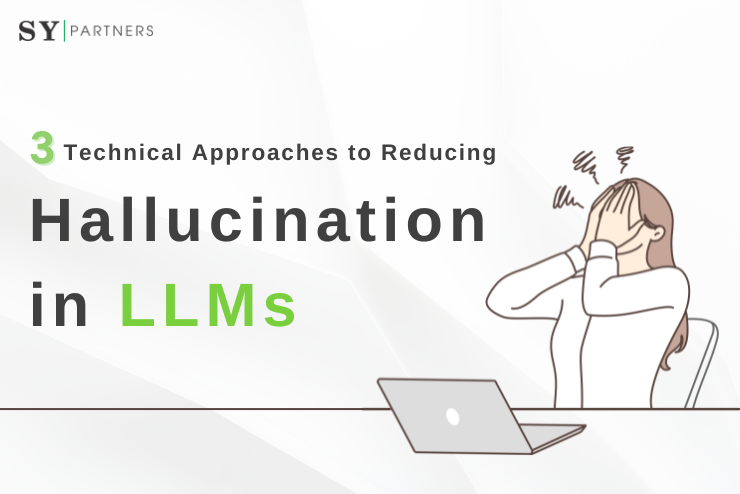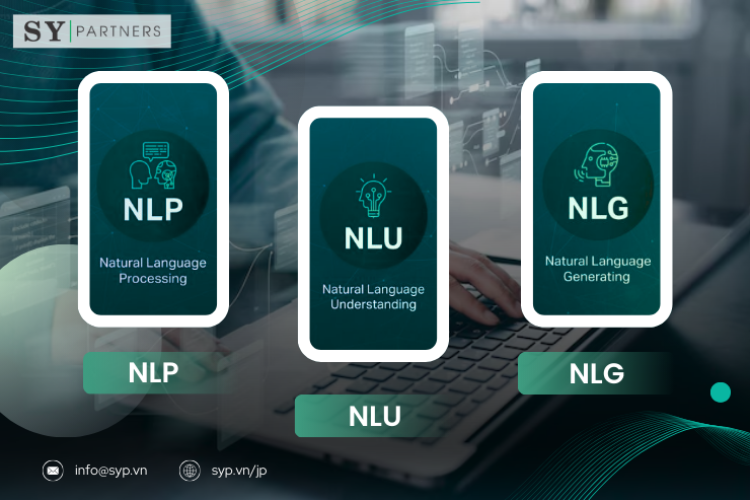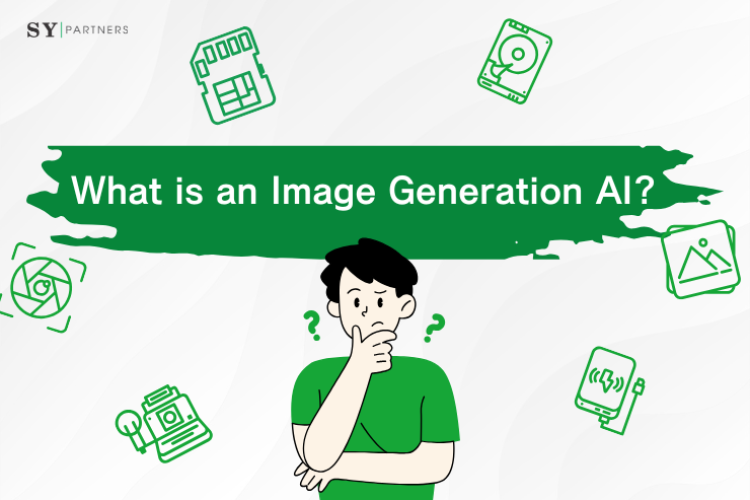Technical Approaches to Reducing Hallucination in LLMs
With the advancement of DX, generative AI is now widely used in text creation, customer support, and data analysis, contributing to improved efficiency and competitiveness. However, at the same time, a serious issue known as “hallucination” has emerged—when AI generates information that appears plausible but is in fact incorrect.
This article defines hallucination, explains its causes, types, and risks, explores its industry-specific impacts, and introduces the latest technical countermeasures. It provides practical guidelines for companies to adopt generative AI safely and effectively.
1. What is Hallucination?
Hallucination refers to the phenomenon where generative AI produces outputs that sound convincing but are factually incorrect or lack evidence. Examples include wrong dates of historical events or details about people who do not exist.
Because AI’s outputs are often fluent and persuasive, users may fail to notice the misinformation and mistakenly trust it.
This problem becomes particularly critical in enterprise use cases. Since generative AI often does not provide sources, spreading incorrect information to customers or stakeholders could lead to loss of brand trust and even legal risks. In business scenarios where accuracy is paramount, managing and mitigating hallucination is essential.
2. Causes of Hallucination
Hallucination mainly arises from issues in AI’s training process and the data it uses. Below are the key causes in detail.
Main Causes of Hallucination
| Cause | Description |
|---|---|
| Quality of training data | Includes errors, outdated information, or biased content |
| Data scarcity | Insufficient information forces AI to rely on guesswork |
| Incorrect data combination | AI mistakenly merges unrelated contexts |
| Model design issues | Flaws in architecture or training process |
| Errors from inference | Incorrect assumptions due to limited understanding |
2.1 Quality of Training Data
If training data contains errors or outdated information, the AI is more likely to generate incorrect outputs. For example, if the dataset does not reflect the latest scientific knowledge, the AI may provide answers based on obsolete information. Similarly, biased datasets can lead to skewed or discriminatory outputs.
2.2 Data Scarcity
When data on a specific domain or topic is insufficient, the AI tends to make guesses from limited knowledge, often resulting in wrong answers. For instance, if data on rare diseases is scarce, the AI may produce incorrect diagnoses.
2.3 Incorrect Data Combination
When the AI confuses or wrongly merges data from different contexts, it may generate information that does not align with reality. Connecting unrelated pieces of information can lead to factually inaccurate responses.
2.4 Model Design and Training Process Issues
If the model architecture or training method is flawed, hallucinations are more likely to occur. Overfitting or overly complex models may prevent the AI from correctly understanding meaning, leading to errors. Insufficient validation during training can also result in systematic mistakes being learned.
2.5 Errors from Inference
When asked ambiguous questions or faced with topics lacking sufficient information, AI may produce speculative answers that contradict facts. For example, when asked “What are the latest climate change measures?” without enough reference data, the AI might invent non-existent policies or technologies.
3. Types of Hallucination
Hallucination can be broadly classified into two main types, depending on how it arises.
| Type | Characteristics |
|---|---|
| Intrinsic Hallucination | Incorrect answers caused by misinterpreting training data |
| Extrinsic Hallucination | Fabrication of information that does not exist in the training data |
3.1 Intrinsic Hallucinations
Intrinsic hallucinations occur when the AI misinterprets information contained in its training data.
For example, if a dataset states that ‘Euglena comes from the Latin for “beautiful eye”,’ an AI system might mistakenly generate a statement such as ‘The name Euglena originates from the Latin word for beautiful eye.’ This kind of misinterpretation can occur in any language or cultural context when training data contains inaccuracies.
This kind of mistake is relatively minor, often arising from rephrasing or contextual shifts, but it can still cause problems in scenarios where precision is essential.
3.2 Extrinsic Hallucinations
Extrinsic hallucinations occur when the AI fabricates information that does not exist in its training data.
For example, it might generate a completely false explanation such as: “The name Euglena means ‘a vividly green organism that cannot be ignored.’”
This type carries higher risk because it can mislead users and drive incorrect decision-making, making it particularly concerning.
4. Risks of Hallucination
Hallucinations generated by AI can pose serious risks to both individuals and organizations. The key impacts are outlined below.
4.1 Spread of Misinformation
Incorrect information generated by AI can spread through social media or reports, leading to confusion and misunderstanding.
For example, if inaccurate product specifications are published, it may damage customer trust and weaken corporate competitiveness.
4.2 Faulty Decision-Making
When decisions are made based on hallucinated information, it can result in strategic mistakes and financial losses.
- Example: Investment based on an incorrect market forecast → financial loss
- Example: Product development based on false information → mismatch with market needs
4.3 Damage to Trust and Brand
If AI-generated misinformation is delivered to customers or business partners, it can harm a company’s credibility and brand image.
This is especially critical in high-risk industries such as healthcare and finance, where accuracy is paramount.
- Example: A misdiagnosis provided in a medical setting → direct impact on patient safety
5. Advanced Technologies to Reduce Hallucination
Various advanced technologies have been developed to suppress hallucinations. Below are three key approaches.
| Technology | Description |
|---|---|
| Knowledge Graphs | Support accurate answers through structured factual data |
| Context-Aware Generation Control | Keeps AI outputs aligned with user intent and prevents digression |
| Automated Fact-Checking Systems | Verify outputs in real time and immediately detect misinformation |
5.1 Use of Knowledge Graphs
A knowledge graph structures and manages relationships between facts and data. By referencing it, AI can generate responses grounded in reliable information, reducing the risk of fabrication.
- Example: In healthcare, knowledge graphs clarify relationships between diseases and treatments, helping prevent misdiagnoses.
5.2 Context-Based Generation Control
This approach ensures the AI adheres strictly to the user’s intent and the context of the question.
For example, specifying “Answer based on the latest available data” helps prevent outdated information or irrelevant speculation from entering the response.
5.3 Automated Fact-Checking Systems
These systems verify AI outputs in real time by cross-checking against trusted information sources, enabling immediate detection of misinformation.
They are particularly effective in domains such as news generation and customer support.
6. Countermeasures Against Hallucination
Minimizing hallucinations requires both preventive risk management and response strategies after occurrence.
| Category | Specific Measures |
|---|---|
| Risk Management | Improve data quality, grounding, model monitoring, RLHF, prompt optimization |
| Response at Occurrence | User education, guideline development, fact-checking, output filtering |
6.1 Risk Management to Prevent Hallucinations
6.1.1 Improving Training Data Quality
Prepare high-quality, accurate datasets and update them regularly to reduce the impact of errors or outdated information. It is also critical to restrict sources to reliable ones.
6.1.2 Grounding
Carefully select data and URLs that AI can reference, limiting them to trusted sources. This prevents the model from ingesting false information.
6.1.3 Model Monitoring and Improvement
Continuously review the training process and model architecture, making adjustments as needed. Ongoing expert oversight is essential.
6.1.4 RLHF (Reinforcement Learning from Human Feedback)
Leverage human feedback to improve the accuracy of AI outputs. Incorporating user corrections and evaluations into the model helps reduce errors.
6.1.5 Prompt Optimization
Ambiguous or overly complex prompts increase the risk of hallucinations. Clear and specific prompts should be used. For example: “Answer based on 2023 data” helps prevent speculative responses.
6.2 Response Measures When Hallucinations Occur
6.2.1 User Education
Educate users about the risks of hallucination and encourage habits of verifying outputs. Internal training and workshops can strengthen awareness.
6.2.2 Guideline Development
Establish clear guidelines on data quality and prompt creation, and distribute them to employees to standardize AI usage practices.
6.2.3 Strict Fact-Checking
Verify AI outputs with experts or trusted information sources before use. Automated fact-checking tools are also effective.
6.2.4 Output Filtering
Apply human-designed filters to detect biased or incorrect information. Filtering criteria should be tailored to industry and business needs.
7. Best Practices for Leveraging Generative AI
Since hallucinations cannot be completely eliminated at present, organizations must adopt strategies that assume this risk when implementing generative AI.
7.1 Using AI with Hallucination in Mind
Companies adopting generative AI must always consider the possibility of hallucinations and build processes to verify all outputs.
This is especially crucial when AI is used for critical decision-making or customer interactions, where thorough fact-checking is indispensable.
- Example: Require expert review of AI-generated reports before they are used.
7.2 Balancing with Digitalization
Rather than over-relying on generative AI, businesses should first advance digitalization. This ensures efficiency gains based on accurate data and reduces hallucination risks.
- Example: Building reliable databases and automating workflows should serve as the foundation before adopting AI. This allows AI to act as a supportive tool, minimizing risks.
7.3 Gradual Introduction of Generative AI
Instead of fully delegating tasks to AI at once, organizations should implement AI step by step to better manage risk.
For example:
- Use AI for creative suggestions or supplementary tasks.
- Keep human oversight for important decisions.
Gradual adoption makes it possible to evaluate AI reliability while progressively expanding its role.
Conclusion
Hallucination refers to the phenomenon where generative AI produces inaccurate or baseless information. It poses risks such as misinformation spread, faulty decision-making, and damage to corporate trust.
Key causes include poor-quality training data, insufficient datasets, incorrect data combinations, flawed model design, and speculative reasoning. The risks are particularly severe in healthcare, finance, and media, where it can lead to misdiagnoses, misguided investments, or confusion in reporting.
To mitigate these risks, organizations should focus on improving data quality, grounding, RLHF, prompt optimization, and rigorous fact-checking. Advanced technologies like knowledge graphs and automated fact-checking systems are also effective.
By building a foundation of digitalization, introducing AI gradually, and combining human verification for critical decisions, companies can minimize risks while driving digital transformation (DX) with generative AI.


 EN
EN JP
JP KR
KR




